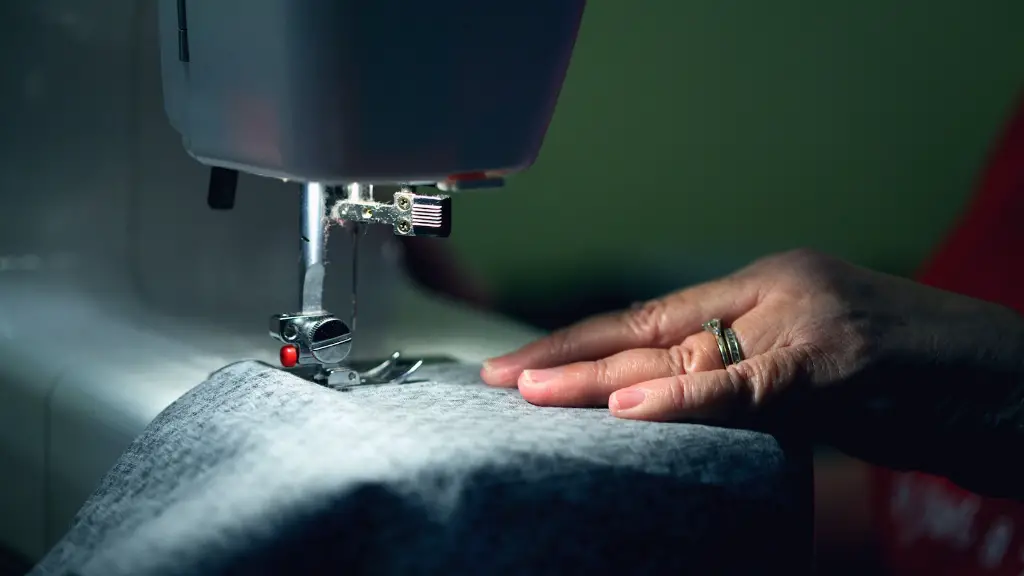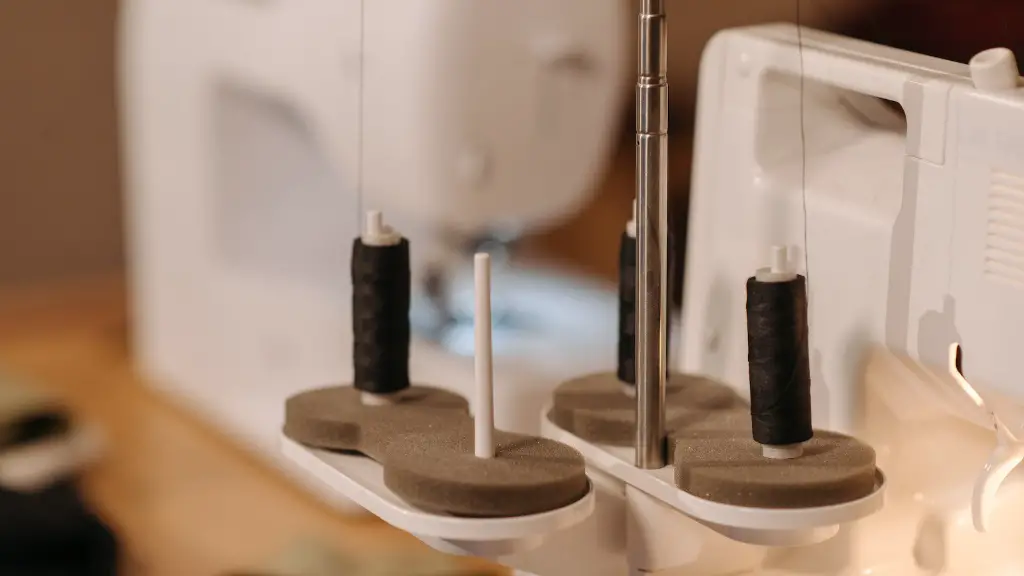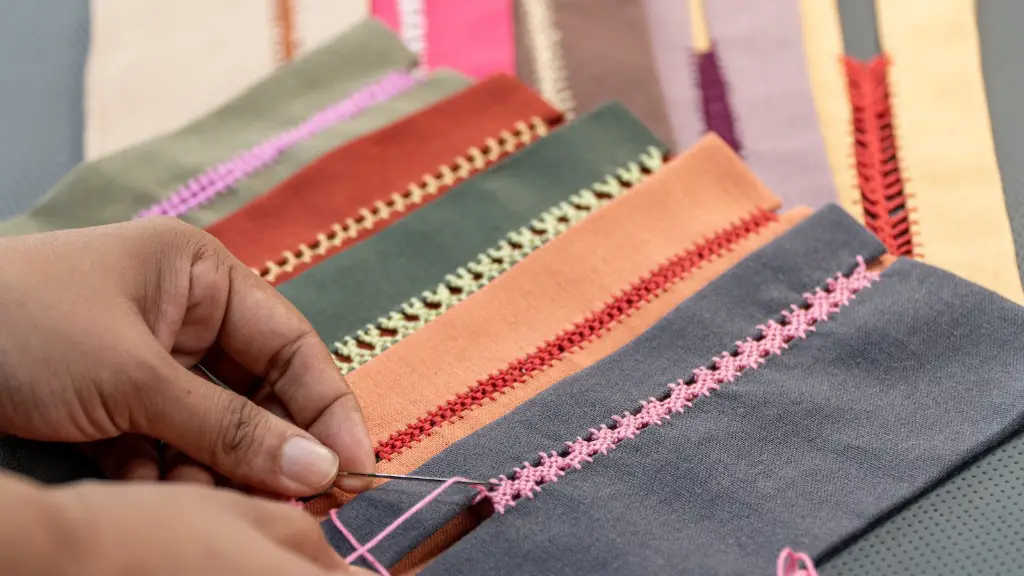Hemming by Hand
Hemming your pants without using a sewing machine can seem daunting. Fortunately, hemming by hand is actually a simple and easy process that anyone can do without technical know-how. All you will need is a pair of scissors and some thread of the same color as your pants.
To get started, you first need to determine how long you want your pants to be. This can be done by putting the pants on and lightly marking where you want the hemline to be. Once that is determined, turn the pants inside out and fold the hem under. Measure half an inch, then fold the hem down once more. Prior to starting your stitches, you may want to use a fabric pen or chalk to mark a guide line.
Begin stitching by taking a single thread and looping it over the inside of the folded hem. It is important to create small and tight stitches to ensure that the hem is kept in place. To make them as clean as possible, ensure your stitches have the same length throughout. Rearrange the fabric until the stitches are as close together as you desire. Knot the thread at the end to secure the stitch. You may decide to begin the next stitch from the same side of the hem or the opposite side. After completing the entire hem, snip any excess thread.
The most important step to take before attempting this process is to use the correct type of thread that is of the exact same color as the fabric. Furthermore, it is recommendable to use quality thread and needles for a cleaner look and longer-lasting effect. Utilize sharp scissors to get a precise cut. If possible, reinforce the hem by hand rolling it from the inside. This technique involves taking a small piece of thread and rolling it around the hemline to make it sturdier and keep the hem in the intended shape.
Alternative Methods
Hemming without a sewing machine is not limited to hand stitching. There are some alternative methods you can explore. For instance, fusible bonds apply heat sensitive adhesive on fabric to join it. There are a wide range of products available, such as hem tape, interfacing tape and fusing web.
The primary benefit of using these products and techniques is that they create a more professional and clean look compared to other methods. Furthermore, it is the fastest and simplest way to hem pants at home. After applying the adhesive, smooth the edges and wait for it to cool down and dry.
Gluing and ironing is another method for hemming that does not require any sewing. Fusing webs are a popular option and they provide excellent results with minimal effort. When using this technique, make sure that the fabric of your pants is suitable for ironing, otherwise you may damage them permanently. Lay the pants on a flat surface, place the adhesive and press it with a warm iron for a few seconds.
In case sewing is not your favorite activity or you want to create a more original design, you can opt for adding decorative elements such as ribbons, fringes or custom embroidery. These accessories can be placed in the hemline and sewn in place. Fabric paint can be used to add different colors and create unique designs. Simply draw your design and fill it with the paint by using a brush or a sponge.
Visible Hems
An important factor to consider when hemming your pants without a sewing machine is the type of visible hem you want. In case you are looking for a minimalist look, choose the method that leaves a clean finish and the least visible stitches. The key is to hide the knots and secure the hemline with the smallest stitches possible.
On the other hand, if your goal is a visible hem, you will need to make sure your stitching stands out. Remember to use enough thread and make your stitches slightly bigger. Keep the same pattern and ensure your stitches have the same size and shape throughout the hem. Hemming by hand is the best option for a visible hem because the stitches will look much neater.
Sizing the Hems
When hemming pants with any of the techniques mentioned above, you can use the best methods to determine the ideal length. For instance, you may want to roll the hemline twice or make it slightly longer than necessary. You may also want to consider leaving some extra length to cater for shrinkage or possible alterations in the future.
In order to determine how much extra length you need, you can measure the fabric and measure the pants when worn. Furthermore, try the pants on to make sure they fit properly and the hem is just the right length. Finally, be sure to check the inside of the pants to make sure there is no visible stitching.
Care and Maintenance
Once your hemming process is complete, the next step is to take proper care of the fabric. Remember to frequently check for fraying threads and knots to make sure your hem stays in place. If there is any unraveling during or after washing, it is recommendable to wait for the fabric to dry before re-hemming.
In order to prevent fraying, use press cloths and do not press directly on the hem. If necessary, you can treat the hem with a fabric sealant that will act as a protective layer. This will help to keep the pants’ fabric and hem intact for longer periods of time.
Advantages of Hand Hemming
Hemming without a sewing machine offers multiple advantages. First and foremost, it is cost effective and it can be done with very simple tools. Furthermore, it is a great way to adjust the length of your clothing without having to purchase items of different sizes.
It also opens up new opportunities to customize your clothing at a much cheaper cost. You can take advantage of different techniques, colors and patterns to create statement pieces and add new dimensions to your wardrobe.
Additional Tips
When hemming pants, it is important to consider the type of fabric used. Different fabrics require different techniques and threads. In case the fabric is slippier, use stronger and heavier thread to hold the fabric together. Furthermore, in case of delicate fabrics, use small stitches that do not pass through the back of the fabric.
To create a cleaner and professional look, consider using a thimble to protect your fingertips. Lastly, it will be much easier to work with different fabrics if you have a metal measuring ruler and a seam gauge. This will give you greater precision and control when measuring and cutting.
Making Adjustments
In case the hem still needs some tweaks, the best way to make the necessary adjustments is by taking the fabric to the tailor. Experienced tailors can fix any alterations and make sure the fit is perfect. Alternatively, if you want to make the adjustments on your own, you may create a new stitch pattern or iron the hem for a more professional look.
If you are looking for a fast and cost-effective way to adjust the length of your pants, hemming by hand is the perfect solution. All you will need is some basic tools and a bit of patience to complete your hemming project. With these techniques, you can hem your own clothing and add some unique and creative enhancements.
Conclusion
Hemming without a sewing machine is much simpler than it may appear. It requires basic material and simple techniques to achieve excellent results. Furthermore, it can be a great and cost-effective way to make minor adjustments or re-size your clothing.
There are multiple methods you can use to hem clothing and create unique designs. From hand stitching to gluing and ironing, you have several options to explore. Depending on your preferences, you can opt for visible or hidden hems, and add some extra protection to make your wardrobe last longer.





